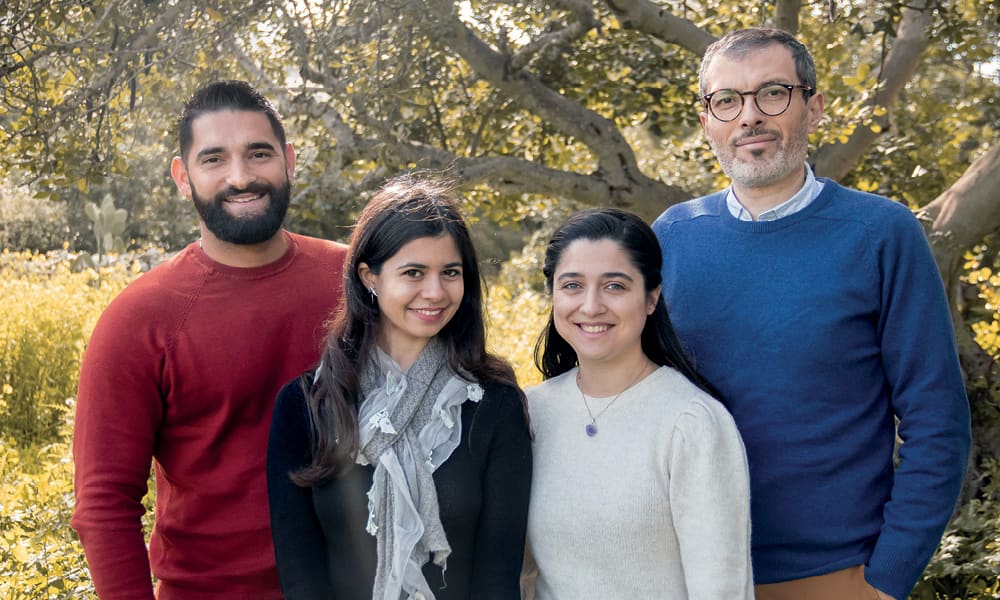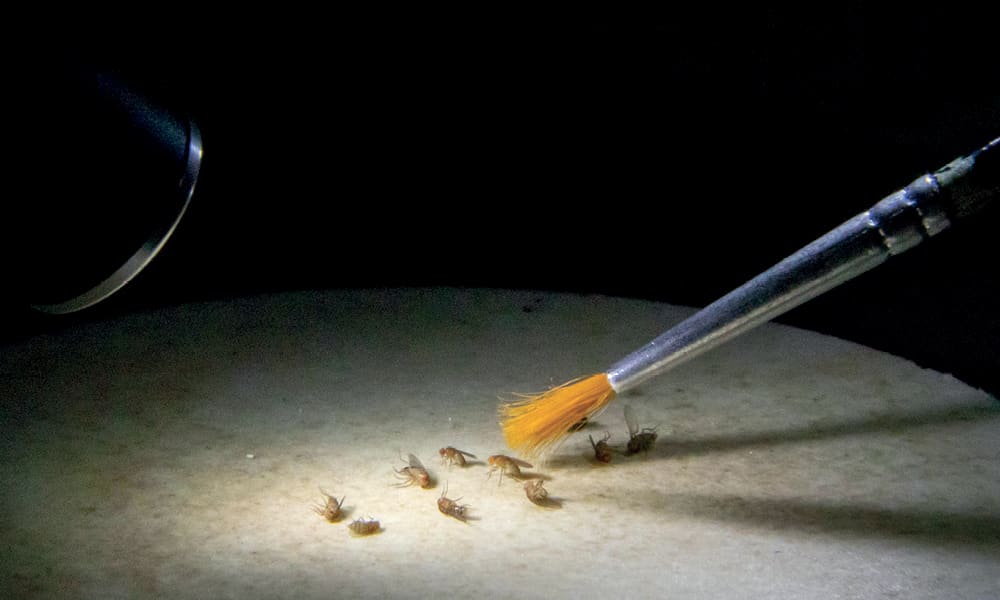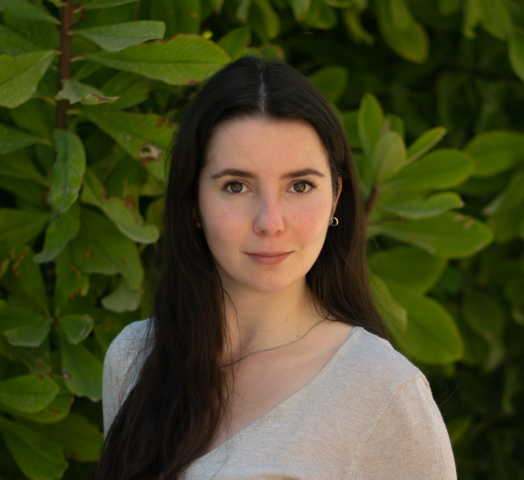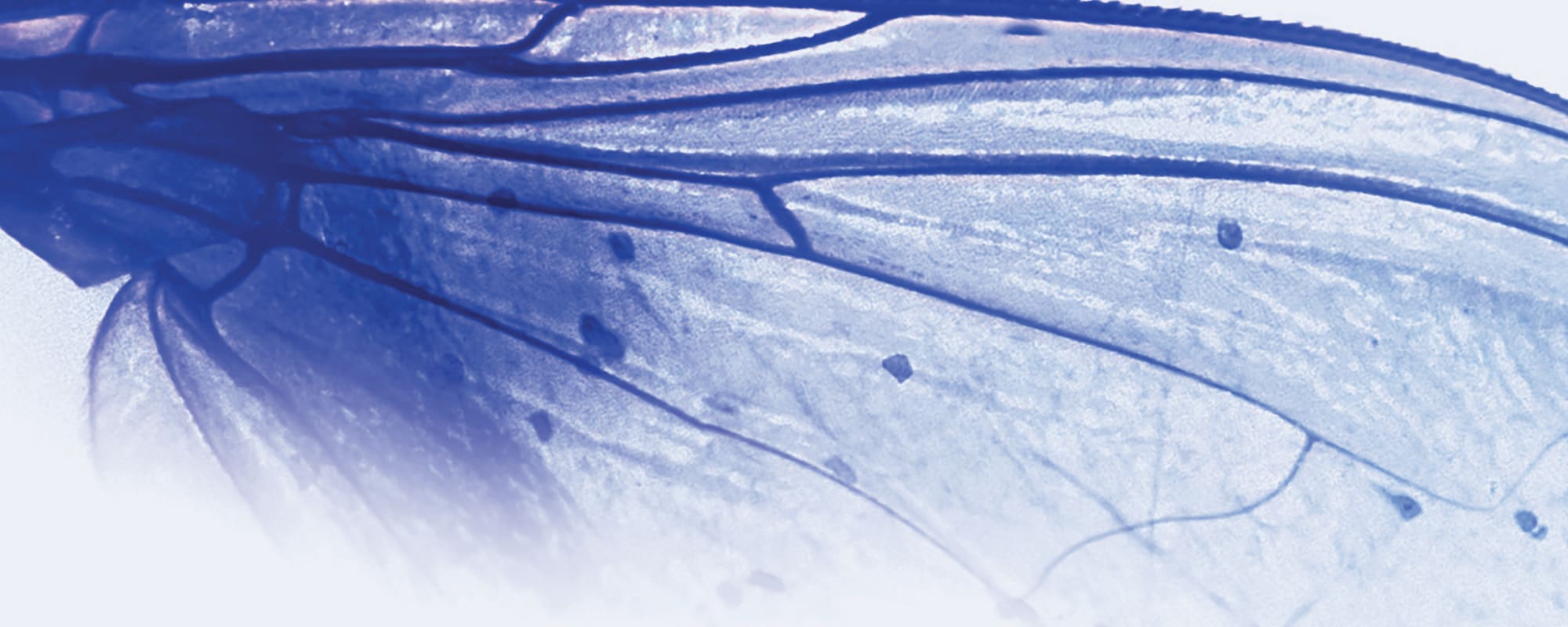Amyotrophic Lateral Sclerosis (ALS) is a rare neurodegenerative disease that ‘locks’ patients in their own bodies, clear-headed but unable to move or speak. A research group at the University of Malta is looking for therapeutic targets to treat the disease while supporting ALS patients and their families through their condition.
It is Monday morning, and Ph.D. student Maia Farrugia Wismayer is knocking on a patient’s door. The house visit has a double function: first, to collect blood samples for the ALS/MND Lab’s biobank at the University of Malta. The second is primarily to assess the patient’s neuromuscular health, but also to give advice, answer the family’s questions, and offer as much hope as the researcher can in the face of this daunting disease.
ALS is a degenerative motor neuron disease (MND) that leads to the loss of muscle function, including movement, breathing, and speech.
The devastating condition typically occurs in adults, usually between 45 and 75 years of age. For most patients, the disease ultimately leads to respiratory failure and death two to three years after the onset of symptoms. To this day, there is no cure.
ALS, although a rare disease, is a daunting diagnosis, and its incidence in Malta is higher than the rest of Europe. Led by Prof. Ruben J. Cauchi, an associate professor of Neurogenetics at the University of Malta, the ALS/MND Lab is working to better understand this disease, a first step towards finding effective treatments.
Creating a Biobank
Cauchi started his research on ALS using fruit flies. But he soon felt the need to get closer to the local population. To do so, he started a biobank: a repository of blood samples and data from local patients, including their residence, occupation, lifestyle, and environmental exposures.
Farrugia Wismayer visits patients to collect samples for the biobank – samples are the puzzle pieces that create the big picture of ALS in Malta. But a crucial step of the research process is also bringing science closer to the ones who need it. In a frightening period of their lives, patients and their families can discuss their concerns with experts in the comfort of their homes. Farrugia Wismayer recalls, ‘It is humbling to see the courage that they have. They put their trust in us. They know that there is no hope for them, but they can help future patients.’
The researchers also collaborate with the patients’ neurologists. They advise the clinicians about promising clinical trials that may benefit particular patients.
Genes vs. Environment
Thanks to the analysis of the samples in the biobank, Malta’s ALS/MND Lab now understands the context of ALS in the Maltese islands.
The disease can be caused by environmental or genetic factors and, quite often, a mix of both. Familial cases of ALS are caused purely by hereditary (genetic) factors and constitute around 12% of Maltese cases. The remaining percentage are sporadic cases, where a person does not have a family history of ALS but it is still possible to have inherited it from their parents. For example, if a patient’s parents died young, they may have possessed the genes related to ALS but did not live long enough for the disease to manifest. Sporadic cases usually result from an interaction between genetic and environmental factors, the latter including lifestyle choices or environmental exposures.
With the blood samples, the ALS/MND team analysed the genetic variations present in Maltese ALS patients. Their results show that Maltese patients have different gene variants to the rest of Europe. There are four typical genes with damaging variants that cause ALS in Europe. These damaging variants are quite rare in Malta. Conversely, there are about five common genes in Malta with damaging variants, which are actually rare in the rest of Europe.
The most recent study of the group found that in Malta, more than in other countries, the balance tilts towards genes as a major determinant of ALS. Findings show that the percentage of genetically explained ALS cases within the Maltese population is one of the highest in the world (around 40% compared to around 20% observed in other populations). This alludes to the effect of genetic insularity on an island population.

Photo by James Moffett
Looking for Effective Therapies
After figuring out that Maltese patients show a different genetic profile from the rest of Europe, Cauchi wanted to understand how these gene variants lead to ALS. To do so, he went back to fruit flies.
But why would one use flies to study genes that affect humans? Having a 75% genetic overlap with the human genome, but with a genome simple enough to associate a gene with a function, fruit flies are the perfect animal model to study the genetic causes of ALS. Additionally, of all multicellular organisms, flies are the easiest model to manipulate genetically. A win-win situation.
In the fruit flies, the team, headed by Cauchi, is silencing genes they previously saw connected to ALS in Maltese patients. When genes are silenced, they stop executing their function. The researchers can infer the function of the genes by analysing what stops (or starts) working when they silence that gene. Usually, a gene produces a protein that works in particular pathways in a cell. If you silence a gene, the protein is not produced, and the pathway stops working.
If the researchers understand what is happening in a particular pathway, they can tweak it by changing the levels of other proteins. Down the line, they may be able to find proteins that regulate a pathway that is altered in ALS patients. If there are already drugs in the market that target these hypothetical proteins, then these drugs may be beneficial for ALS patients. However, the work does not stop there. The effectiveness of the drugs for ALS will have to be assessed through clinical trials.
Considering that today there is only one medicine for ALS approved in Europe, which only prolongs life by three months, finding new therapeutic options is a priority for the research community.
Motor Neurons
It is Monday afternoon, and Farrugia Wismayer is back in the lab. However, she is not focusing on the blood samples she collected in the morning. She is dissecting fruit flies with ALS and looking at their motor neurons, hoping to find differences between the motor neurons from healthy fruit flies and flies with ALS.
ALS mainly affects one group of cells: motor neurons, the cells that tell our muscles what our brain wants to do. Finding therapeutic targets specifically in these neurons may help to find therapies that only affect these cells, avoiding systematic secondary effects.
Fruit flies with ALS were genetically engineered to express specific sets of genes that are associated with the disease. These genes were identified through an international collaboration known as Project MinE.

Beyond Borders
Cauchi’s group is collaborating with an international network to better understand ALS and find new treatments. Within Project MinE, the group has access to many more samples and a wide array of expertise. The international project is analysing the genes of at least 30,000 ALS patients from all over the world, and they are comparing this data to 122,000 individuals without the disease to identify genetic differences between healthy individuals and ALS patients.
Scientists working on Project MinE, including those from Malta’s ALS/MND Lab, are looking into two different components of our DNA. The first is the genome, the DNA that is stored in our cells. The other is the epigenome, the array of molecules that bind to the DNA and help it be read and expressed. Our cells carry a lot of different genes, but not all genes are used. Different cell types use different genes, and the epigenome regulates which ones are being put to use.
From this work, Project MinE found 15 genes that, when altered, lead to an increased risk of developing ALS. Alone, these altered genes would not cause ALS. However, the risk for developing the disease increases if one of these genes is damaged by variants that one carries in their DNA.
Cell Transport and Cleaning the Cells
By analysing samples from the Project MinE network, scientists also found more than 40 regions in the genome linked to ALS that can be switched on or off according to lifestyle.
Lifestyle changes alter the epigenome and lead to different genes being expressed. This allows the cells to quickly adapt to their environment. As such, our lifestyle has the power to cause changes to our epigenome, fundamentally affecting the genes expressed and, consequently, the cells’ response.
Several genes and epigenetic areas identified through Project MinE have functions related to vesicle-mediated transport and autophagy.
Vesicle-mediated transport is the way cargo is trafficked inside cells. Some cargoes contain waste. Autophagy is the way our cells get rid of this waste through either its destruction or recycling. It is essential for fighting bacterial and viral infections, and it even protects us from cancer. When it is not well-regulated, it stops clearing cell components, including cholesterol, and because of this, high levels of cholesterol can be indicators of a deficient autophagy system and, consequently, ALS.
Curiously, the most common ALS genes damaged in Maltese ALS patients (the rare ones in Europe) are also linked to vesicular trafficking and autophagy, hinting that even though ALS can be caused by different genes, the mechanism behind its onset is somewhat consistent.
Because of the link between ALS and impaired intracellular (inside the cells) transport as well as autophagy, the flies Farrugia Wismayer is analysing have altered genes that function in these pathways. Cauchi’s lab is starting to determine how the cell’s transport and cleaning system leads to ALS, and by understanding the process, they may identify therapeutic targets.
The next steps for the group will be to understand how the environment and the genome interact, which is complicated to study since everyone has a different lifestyle, thus having different environmental interferences.
Cauchi’s lab has already identified that manual workers are twice as likely to be diagnosed with ALS. Research in other populations have shown that Italian football players, American NFL rugby players, and military servicemen have an increased risk of ALS compared to the general population. A long history of strenuous physical exertion therefore appears to trigger ALS. The lab is thus experimenting on different ‘lifestyle’ exposures that can be toxic to motor neurons in flies.
Science at the Service of Society
It is late on this Monday afternoon, and the researchers should be heading home, but the group has one more task to complete, one that goes beyond their research responsibilities. While working hard to push forward the research on ALS, the group is also trying to spread the existing knowledge to the communities that need it. Annually, they organise seminars for patients, families, researchers, clinicians, and anyone interested in learning more about ALS. Here they reveal new findings based on the latest research of the lab and current advances in the development of treatments.
Their direct work with patients and their efforts to collaborate with clinicians and other researchers show that the University of Malta’s ALS/MND group does not lose focus on the bigger picture: the impact of its research on the life of patients. A true example of science at the service of society.
Research at the University of Malta’s ALS/MND Lab is presently funded by the Malta Council for Science & Technology Research Excellence Programme and the Internationalisation Partnership Award, the Anthony Rizzo Memorial ALS Research Fund facilitated by the University of Malta’s Research Trust (RIDT) and an Endeavour Scholarship (part-financed by the European Social Fund).
Further Reading
Borg, R., Farrugia Wismayer, M., Bonavia, K., Farrugia Wismayer, A., Vella, M., van Vugt, J.J.F.A., Kenna, B.J., Kenna, K.P., Vassallo, N., Veldink, J.H., & Cauchi, R.J. (2021). Genetic analysis of ALS cases in the isolated island population of Malta. Eur J Hum Genet. 29 (4):604-614. doi: 10.1038/s41431-020-00767-9.
Farrugia Wismayer, M., Borg, R., Farrugia Wismayer, A., Bonavia, K., Vella, M., Pace, A., Vassallo, N., & Cauchi, R.J. (2021) Occupation and amyotrophic lateral sclerosis risk: a case-control study in the isolated island population of Malta. Amyotroph Lateral Scler Frontotemporal Degener, 22(7-8):528-534. doi: 10.1080/21678421.2021.1905847.
van Rheenen et al. (2021) Common and rare variant association analyses in amyotrophic lateral sclerosis identify 15 risk loci with distinct genetic architectures and neuron-specific biology. Nat Genet, 53(12):1636-1648. doi: 10.1038/s41588-021-00973-1.
Hop, P.J. et al. (2022) Genome-wide study of DNA methylation shows alterations in metabolic, inflammatory, and cholesterol pathways in ALS. Sci Transl Med, 14(633). doi: 10.1126/scitranslmed.abj0264.Farrugia Wismayer, M., Farrugia Wismayer, A., Borg, R., Bonavia, K., Abela, A., Chircop, C., Aquilina, J., Soler, D., Pace, A., Vella, M., Vassallo, N., & Cauchi, R.J. (2022). Genetic landscape of ALS in Malta based on a quinquennial analysis. Neurobiol Aging. 23:(22). doi: 10.1016/j.neurobiolaging.2022.11.011.
Author
-

Antónia was a Biologist, once upon a time. She transitioned from the glamorous world of lab benches and international conferences to her one true love - Science Communication. Antónia works as a freelance science writer and also manages social media for THINK. In her free time, she pets street cats and educates people on Portuguese gastronomy - often against their will.
View all posts






Comments are closed for this article!